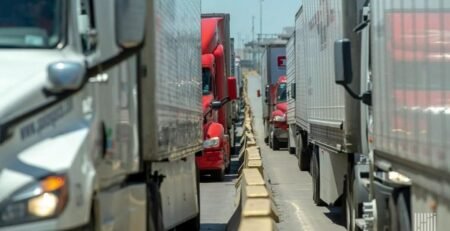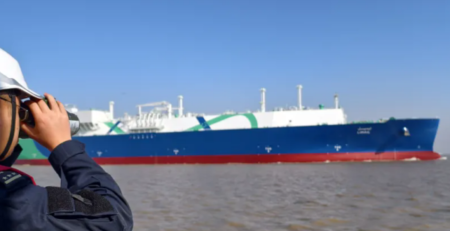Decarbonizing Logistics: How 2025 Is Becoming the Turning Point for Global Green Supply Chains

By Eva Richardson | The Logistic News
April 15, 2025
As climate urgency collides with supply chain disruption, 2025 is shaping up to be the year logistics players finally start walking the sustainability talk. Across continents, companies are no longer debating whether to green their operations—they’re racing to figure out how.
From carbon-neutral warehouses to alternative fuel vehicles and digitized emissions tracking, sustainability is no longer a secondary concern—it’s becoming a core performance metric.
“If you’re not building decarbonization into your logistics operations today, you won’t be in the market tomorrow,” said Marc Habib, Head of Sustainability at a leading European 3PL.
ESG Pressure Becomes Operational Pressure
Investors and regulators are now demanding ESG compliance that is verifiable, not aspirational. Multinational shippers are restructuring contracts to require end-to-end emissions data. Greenwashing is being replaced by blockchain-based carbon reporting, real-time route optimization, and third-party sustainability audits.
According to a recent McKinsey survey, over 65% of global logistics executives expect their companies to adopt net-zero emissions goals before 2027—compared to just 28% in 2021.
Governments are also accelerating the shift. The EU’s Carbon Border Adjustment Mechanism (CBAM), launching in full force next year, will require importers to disclose and pay for embedded carbon emissions in certain goods—many of which are logistics-intensive.
Tech and Data Are the New Green Infrastructure
In 2025, technology is the enabler. AI-driven supply chain visibility platforms now allow shippers to measure carbon output at every stage—from raw material sourcing to last-mile delivery. Meanwhile, cloud-based emissions calculators are embedded directly into TMS (transport management systems), offering instant CO₂ impact projections alongside route and cost options.
Startups and incumbents alike are investing heavily in:
-
Electric and hydrogen truck fleets
-
Solar-powered distribution hubs
-
Digital twin modeling for greener network design
-
Carbon marketplaces and offset integrations
“We’re building a smart, self-healing supply chain model where sustainability is measured in real time, not once a year,” said Laila El-Mansouri, CTO at a green freight tech firm in Morocco.
Collaboration Will Determine Winners and Losers
What sets this green shift apart is that no company can achieve it alone. Port operators, manufacturers, freight forwarders, and last-mile providers are joining forces to align emissions targets, share infrastructure, and build decarbonized trade corridors.
One example is the Green Corridor Charter in Southeast Asia, uniting public and private actors to create a fully net-zero maritime route between Singapore and Vietnam by 2027.
“Supply chains are ecosystems,” said Jean Delcourt, sustainability advisor for the UN Global Compact. “If just one link fails to adapt, the whole chain risks collapse—not just reputationally, but economically.”
Conclusion
The logistics industry stands at a crossroads in 2025. Those who invest in sustainability as a system—across people, platforms, and partnerships—aren’t just doing the right thing. They’re building the operating model for the next generation of global commerce.
Eva Richardson is a senior correspondent at The Logistic News. Her work focuses on supply chain transformation, ESG compliance, and the evolving future of sustainable global trade.
The post Decarbonizing Logistics: How 2025 Is Becoming the Turning Point for Global Green Supply Chains appeared first on The Logistic News.
Share this post
Related
Posts
MEXICO – Truckers’ roadblocks disrupt North American flows
Since dawn, several Mexican highways have looked more like improvised parking lots than logistical corridors. Groups of drivers block entire...
China Cargo Airlines launches new Paris–Shanghai freight service
China Cargo Airlines inaugurates a direct Paris–Shanghai freight flight, complemented by feeder road connections across Western Europe. This corridor meets...
Hudong-Zhonghua de Chine établit un nouveau record pour les livraisons de méthaniers
Chinese shipbuilder Hudong-Zhonghua Shipbuilding today delivered its ninth LNG carrier of the year, marking a new record for a single...
Onboard cameras: technology alone is insufficient in the absence of a true policy
The problem of cameras mounted on trucks was discussed at the Trimble Insight 2025 trade exhibition mainly from the aspect...




